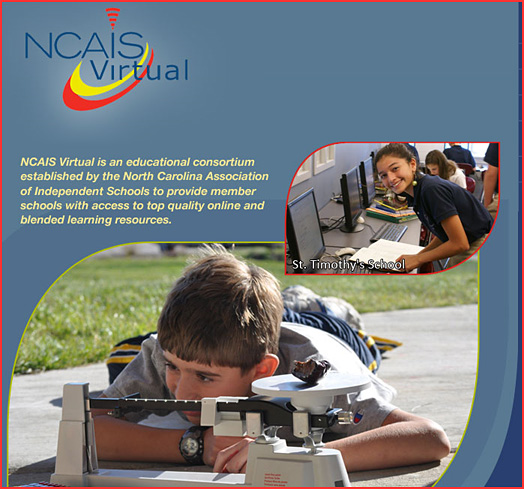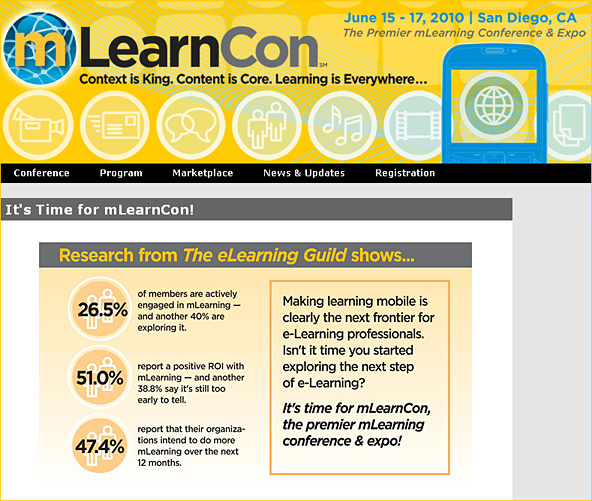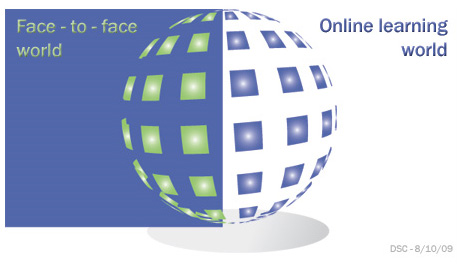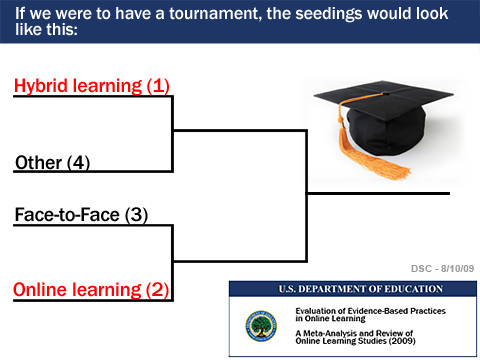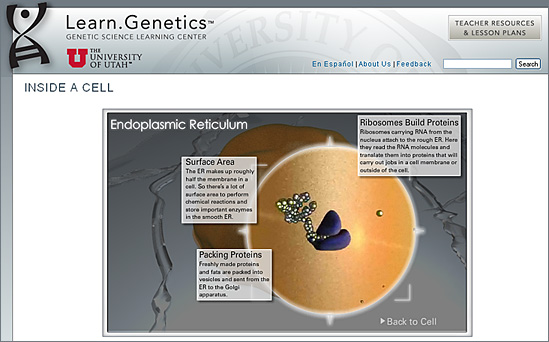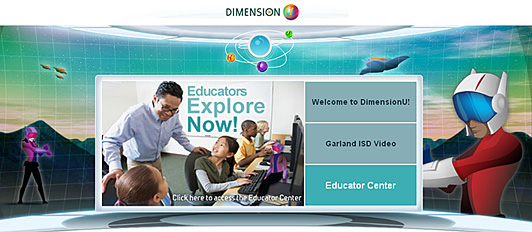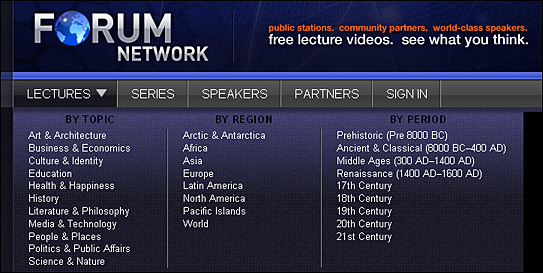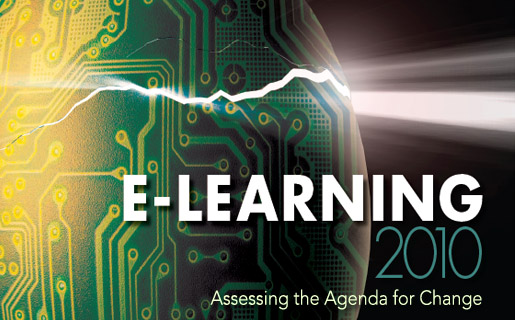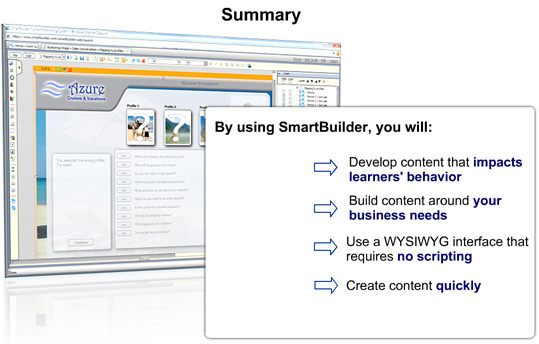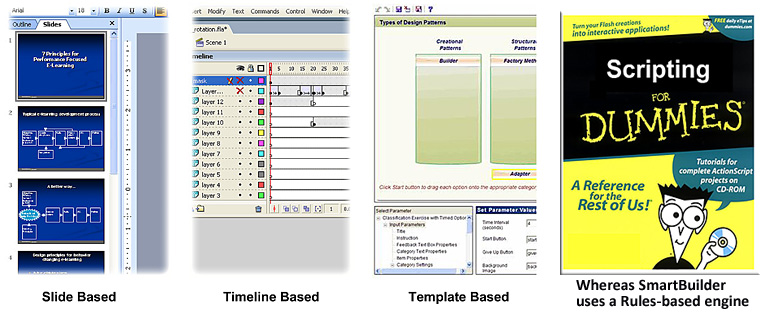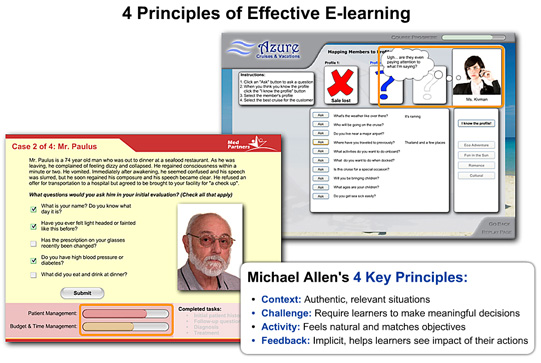Remember what I said earlier about consortiums/pooling resources?
Here’s a great example of that.
Inside a cell — from Elearning Examples
Make it Blended! — from Designed for Learning by Taruna Goel
Blended learning is not a new thing. It is not a radical concept. It is not a new-age way of thinking about learning. As Elliott Masie puts it: “We are, as a species, blended learners.” So, the blend existed much before we understood and (re)defined it.
What does blended learning mean?
There are many definitions of blended learning. Some focus on the technology (aka Internet) and others focus on the theories to be blended. For yet others, a blend is all about the media – combination of instructor-led and elearning. There are a few who only call it a blend when it’s a combination of different types of elearning:
…
…
There are many things to consider before designing a blended learning intervention for example:
• The learning outcomes or objectives
• The design and content of the course
• The learner analysis – motivation and comfort with multi-media
• Use of technology and new media elements
• The degree of collaboration/interaction
• The degree of feedback and level of instruction
• Assessment and evaluation of training
• The role of the instructor/facilitator
To make blended learning a success think why before you think how.
Struggling with the costs of teaching in higher education — Tony Bates
“So you can imagine my delight when Volume 38, Number 3 of ‘Planning for Higher Education‘, devoted almost entirely to Issues in Higher Education Finance’ arrived in the mail. There was indeed some very interesting findings in the papers in this volume, some of which certainly is of value in supporting what I am going to write in the chapter.”
From that posting, Tony lists the following references:
Bates, A. (1995) Chapter 8: Web-based learning: costs and organizational issues, in ‘Technology, e-Learning and Distance Education‘ London/New York: Routledge
Brinkman, P. and Morgan, A. (2010) Financial Planning: Strategies and Lessons Learned Planning for Higher Education, Vol. 38, No. 3, pp. 5-14
McPherson, P. and Shulenburger, D. (2010) Understanding the cost of public higher education Planning for Higher Education Vol. 38, No. 3, pp. 15-24
Rumble, G. (2001) The Cost and Costing of Networked Learning Journal of Asynchronous Learning Networks, Volume 5, Issue 2
Seybert, J. and Rossol, P. (2010) What drives instructional costs in two year colleges Planning for Higher Education Vol. 38, No. 3, pp. 38-44
Twigg, C. (1999) Improving learning and reducing costs: re-designing large enrollment classes Troy NY: The National Center for Academic Transformation
Wellman, J. (2010) Improving data to tackle the higher education ‘cost disease’ Planning for Higher Education Vol. 38, No. 3, pp. 25-37
E-Learning 2010 — EdWeek.org [via Helge Scherlund]
Our new special report from the technology team at Education Week Digital Directions aims to highlight the progress made in the e-learning arena, as well as the administrative, funding, and policy barriers that some experts say are slowing the growth of this form of education.
E-Learning 2010: About This Report
Though progress has been made in the e-learning arena, some experts say administrative, funding, and policy barriers are slowing the growth of this form of education. April 23, 2010 – Education Week
Schools Factor E-Courses Into the Daily Learning Mix
Educators say ‘hybrid’ approach is taking off because it offers academic classes not otherwise available to many students. April 23, 2010 – Education Week
E-Learning Delivery Debated
Experts weigh “anytime, anywhere” learning approach versus fixed time frames for classes. April 23, 2010 – Education Week
District Innovates to Address Dropout Problem
A cyber high school is having success re-engaging dropouts and at-risk students, earning the school system state funds tied to enrollment. April 23, 2010 – Education Week
Virtual Ed. Enrollment Caps Face Greater Scrutiny
Wisconsin and Oregon, which imposed limitations, are now taking a closer look at the restrictions to see if changes are needed. April 23, 2010 – Education Week
E-Learning Hits Barriers to Expansion
A national e-learning framework would require lifting of state policy restrictions now in place. April 23, 2010 – Education Week
Sustaining Funding Seen as Challenge for Online Ed.
Experts in virtual education say new funding approaches should have the money follow the student. April 23, 2010 – Education Week
Accreditation Is Seen as High Priority
But experts say evaluating virtual programs requires an understanding of the unique characteristics of online schools. April 23, 2010 – Education Week
E-Learning in All Shapes and Sizes
Distinguishing between the wide variety of virtual schools and online-learning programs available involves understanding the type of operational control. April 23, 2010 – Education Week
E-Curriculum Builders Seek a Personalized Approach
Creating the flexibility to address students’ varying academic abilities is seen as a key feature of high-quality online curricula. April 23, 2010 – Education Week
Virtual Symposium examines worldwide growth of online access — eSchoolNews.com
Online learning, open courseware, eBooks, wikis, and many other innovative technologies have forever affected education by connecting any topic in any discipline to any learner in any place. Even individuals in remote communities now can access unlimited information free of charge, if they have an internet connection. This also provides more possibilities for international collaboration, knowledge building, and sharing of best practices.
Drexel University’s School of Education capitalized on these possibilities during its second annual live and online Virtual Symposium, in conjunction with Wainhouse Research and the World Bank Institute’s Global Development Learning Network (GDLN). This year’s Virtual Symposium built upon the theme Education for Everyone: Expanding Access Through Technology.
SmartBuilder
I have not used this tool myself, but a classmate at Capella University mentioned it. In reviewing the product tour for it, my initial impression was a positive one, as I don’t want to dive deep into scripting and programming languages — and I also want results, quickly.
Schools save with online learning – Daily Press [via Ray Schroeder]
WHRO, the region’s public broadcasting station, applauds Gov. Bob McDonnell’s vision for online learning in Virginia. Online learning offers students the opportunity to take credit and non-credit courses from remote sites that are bound neither by time nor physical location. No matter where the student is — no matter what the time of day or night — course material is at the ready with the click of a computer mouse. The governor’s initiatives will ensure that homebound students, adult or working learners, all have access to the richness of a full education through online learning.
From the article:
By 2009, we had completed eight full-year online courses, including English 9, 10, 11 and 12; Algebra 1; financial literacy; earth science and Virginia/U.S. Government. In the summer of 2010, we’ll add Algebra II/Trigonometry, geometry, biology and U.S. History.
All of these courses are instructor-led, text-book independent, media-rich and cover all applicable SOLs (emphasis DSC). They arrive at the individual school systems ready to use as-is, without alteration.









